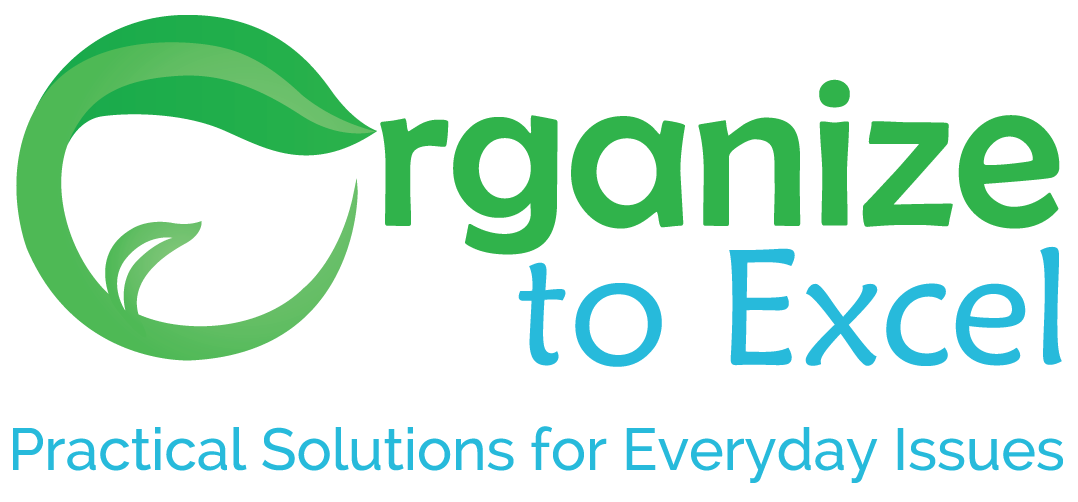

I’ve written before about the best way to keep your digital files organized. Today I’d like to go a little deeper into one of those topics: using search to find files on your computer!
It’s important to keep your digital files organized in a folder/subfolder system! However, the old method of clicking through those files to find what you need is outdated. Keeping your files organized saves space on your hard drive and makes all methods of file retrieval easier, but using your computer’s built-in search function is now faster than the point-and-click route. Here are my best practices for using search to find what you need quickly and efficiently.
How to Use Search
Mac and Windows each have their own built-in search functions, and they operate in similar ways. Much like an internet search engine, you type your keywords into a search bar to find what you’re looking for.
On Mac, the global search function is called Spotlight Search. You can also look for files directly in the Finder system. To open up the Spotlight, click the Spotlight icon, or press Command + Space. Then enter your keywords to search. For some more information on how to use Mac’s Spotlight Search, click here.
Windows has its own search in the task bar, or you can press Windows + S, and enter your keywords from there. More instructions on using it can be found here.
Naming Conventions

Consistent naming conventions make searching much simpler! For example, when working with receipts, I use the date, item, and amount in the file name. Those are generally the things I want to look up. That way I don’t even need to open the file to see its contents! If I bought some cleaning supplies on Amazon on the 4th of January, the receipt file name would be “20220104 Amazon Cleaning Supplies 23-56.pdf”. Using the yyyymmdd format for the date keeps files in chronological order, and putting a dash between the dollars and cents ensures the file name will work with any computer system.
Keep in mind that it’s important to use the date the file refers to in the actual file name. Don’t rely on the “Date Added” or “Date Modified” fields to keep things straight because if you happen to scan an old file, you don’t want today’s date on it.
Think about what you’ll want to know when you need this file again, then add that into the file name. When it’s time to search, you know the right keywords to bring your file up again.
Search by Contents
The easiest way to search for the file you need is going to be by its file name, but Spotlight Search actually searches file contents as well. So if you download something and the file name is auto-generated, or doesn’t follow your convention rules, you can still find it! Windows can do this as well, but it requires some tweaking.
Get Specific with Boolean Operators
If you’re not quite sure which keywords you need to grab the right file, Boolean Operators (AND, OR, and NOT) can narrow down your search results. Let’s say you’re looking for a photo from 2018. You could look for all files from 2018, but you’d probably bring up a LOT of information. Using the AND operator means you can search for files that are from 2018 that are specifically photos. If you’re not sure whether the file you’re looking for is a photo or a PDF, you can use OR to search for files of both types at once.
For more information about Boolean operators, click here.
It’s Not Just for Files!
Keep in mind that you can save time finding and opening programs using the search method, too. Instead of cluttering your desktop with shortcuts, or navigating folder-by-folder to applications, just use Spotlight or the taskbar search to find and open your program!

Apps that Help
There are also productivity apps that make search simpler, or more in-depth depending on what you’re looking for! The one I’m most familiar with is Alfred, which is a Mac productivity app that uses hotkeys and keywords to not just find files, but open and control programs. If you’re a bit of a techie, I recommend checking it out! It’s user-friendly but also quite powerful.
Alfred offers free and paid versions of their app.
Windows users can check out Agent Ransack, which also has a free and paid version
What questions do you have about using your computer’s search function? Comment them below!


Your date graphic is so cute! And this reminds me that I’ve been putting off trying Alfred for far too long. Thank you for the reminder!
When I most recently recertified as an Evernote Certified Expert, I got deep into the weeds on Boolean search functions. That said, while I’m a fan of search, sometimes, it fails. I had a digital gift certificate saved with the name of the company, gift giver, and date. Although Spotlight search serves me well 99% of the time, I’d been missing that gift certificate for a while; I figured one of these days, I’d do a more meticulous search.
I thought, well, maybe I put it in Dropbox or Evernote instead of my computer, but no search found it. I came across it the other day; it had accidentally been moved inside a sub-folder (due to a too-generous drag&drop), and for whatever reason, nothing had found it — not key words, not a partial title, not the month created or the date in the title. Perhaps that’s why, while I believe strongly in search, I’m also still embrace hierarchy. Belt-and-suspenders, eh?
Absolutely, Julie! Search is not meant to replace the folder-subfolder system, it’s just a faster way to navigate through it. It all starts with a neatly organized filing system. : )